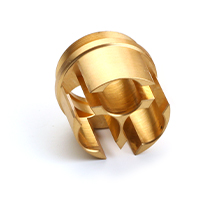Cutting processing, as the cornerstone of modern manufacturing, involves the systematic removal of excess material from metal blanks through methods such as turning, milling, drilling, planing, and grinding to obtain precision parts that meet design requirements. It can be said that almost all industrial products in our daily lives are supported by cutting-processed parts. So, what common metal parts are specifically produced through cutting processing?

Shaft and Gear Parts in Power and Transmission
First, there are shaft and gear parts ubiquitous in power and transmission systems. From the crankshaft of an automobile engine and transmission gears to the core gears in precision reducers of industrial robots, these parts have extremely high requirements for dimensional accuracy, geometric shape, and surface finish. They are typically turned to form outer circles and steps, and then milled and ground to create keyways and tooth profiles, ensuring smooth and efficient power transmission.
Box and Plate Parts for Structural Connection and Fixing
Second, there are box and plate parts that play a key role in structural connection and fixing. Examples include engine cylinder blocks, machine tool beds, and various equipment supports and mounting plates. These parts are usually complex in structure and require numerous drilling operations for bolt connections, milling to create precise planes and grooves, and boring to ensure high-precision coaxiality in critical locations such as bearing holes.

Valve Body and Nozzle Parts for Fluid Control and Power Conversion
Third, there are valve body and nozzle parts widely used in fluid control and power conversion. Control valves in hydraulic systems, fuel nozzles in internal combustion engines, and turbine blades in the aerospace field often have complex internal flow channels and precise mating surfaces. They require multi-axis CNC milling or even special cutting processes such as electrical discharge machining to achieve their unique and demanding profile requirements.
Precision Parts in Electronic Products
Finally, precision cutting-processed parts are also found in the electronic products we use daily, such as metal casings and heat dissipation fins of laptops. These parts achieve a perfect combination of aesthetics, thinness, and durability through high-speed precision cutting.
In summary, from large construction machinery to tiny precision instruments, metal parts after cutting processing form the skeleton and nerves of modern industrial civilization. They are not only carriers of functionality but also direct manifestations of human precision manufacturing wisdom, continuously driving technological progress and development in various industries.